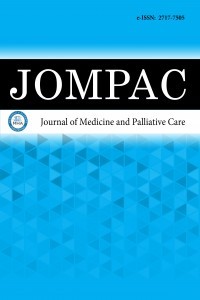1.
Gralinski LE, Menachery VD. Return of the Coronavirus: 2019-nCoV. Viruses. 2020;12(2):135. doi:10.3390/v12020135
2.
Immovilli P, Morelli N, Antonucci E, Radaelli G, Barbera M,Guidetti D. COVID-19 mortality and ICU admission: the Italianexperience. Crit Care. 2020;24(1):228. doi:10.1186/s13054-020-02957-9
3.
Mejdoubi M, Kyndt X, Djennaoui M. ICU admissions and in-hospital deaths linked to COVID-19 in the Paris region arecorrelated with previously observed ambient temperature. PLoSOne. 2020;15(11):e0242268. doi:10.1371/journal.pone.0242268
4.
Girgin S, Aksun M, Tüzen AS, et al. Effects of comorbiditiesassociated with COVID-19 cases in Intensive Care Unit onmortality and disease progression. Eur Rev Med Pharmacol Sci.2023;27(8):3753-3765. doi:10.26355/eurrev_202304_32174
5.
Zhang X, Li S, Niu S. ACE2 and COVID-19 and the resultingARDS. Postgrad Med J. 2020;96(1137):403-407. doi:10.1136/postgradmedj-2020-137935
6.
Lee H, Lim CW, Hong HP, et al. Efficacy of the APACHE II scoreat ICU discharge in predicting post-ICU mortality and ICUreadmission in critically ill surgical patients. Anaesth IntensiveCare. 2015;43(2):175-186. doi:10.1177/0310057X1504300206
7.
Lippi G, Plebani M. Laboratory abnormalities in patients withCOVID-2019 infection. Clin Chem Lab Med. 2020;58(7):1131-1134. doi:10.1515/cclm-2020-0198
8.
Fan BE, Chong VCL, Chan SSW, et al. Hematologic parametersin patients with COVID-19 infection. Am J Hematol.2020;95(6):E131-E134. doi:10.1002/ajh.25774
9.
Pourbagheri-Sigaroodi A, Bashash D, Fateh F, Abolghasemi H.Laboratory findings in COVID-19 diagnosis and prognosis. ClinChim Acta. 2020;510:475-482. doi:10.1016/j.cca.2020.08.019
10.
Vallipuram T, Schwartz BC, Yang SS, Jayaraman D, Dial S.External validation of the ISARIC 4C Mortality Score to predictin-hospital mortality among patients with COVID-19 in aCanadian intensive care unit: a single-centre historical cohortstudy. Can J Anaesth. 2023;70(8):1362-1370. doi:10.1007/s12630-023-02512-4
11.
Moreno RP, Nassar AP Jr. Is APACHE II a useful tool forclinical research?. O APACHE II é uma ferramenta útil parapesquisa clínica?. Rev Bras Ter Intensiva. 2017;29(3):264-267.doi:10.5935/0103-507X.20170046
12.
Zimmerman JE, Kramer AA, McNair DS, Malila FM. AcutePhysiology and Chronic Health Evaluation (APACHE) IV: hospitalmortality assessment for today's critically ill patients. Crit Care Med.2006;34(5):1297-1310. doi:10.1097/01.CCM.0000215112.84523.F0
13.
Wendel Garcia PD, Fumeaux T, Guerci P, et al. Prognostic factorsassociated with mortality risk and disease progression in 639critically ill patients with COVID-19 in Europe: Initial reportof the international RISC-19-ICU prospective observationalcohort. E Clinical Medicine. 2020;25:100449. doi:10.1016/j.eclinm.2020.100449
14.
Grasselli G, Zangrillo A, Zanella A, et al. Baseline Characteristicsand Outcomes of 1591 Patients Infected With SARS-CoV-2Admitted to ICUs of the Lombardy Region, Italy. JAMA.2020;323(16):1574-1581. doi:10.1001/jama.2020.5394
15.
Zou X, Li S, Fang M, et al. Acute Physiology and ChronicHealth Evaluation II Score as a Predictor of Hospital Mortalityin Patients of Coronavirus Disease 2019. Crit Care Med.2020;48(8):e657-e665. doi:10.1097/CCM.0000000000004411
16.
Fällmar D, Rostami E, Kumlien E, et al. The extent ofneuroradiological findings in COVID-19 shows correlationwith blood biomarkers, Glasgow coma scale score and days inintensive care. J Neuroradiol. 2022;49(6):421-427. doi:10.1016/j.neurad.2021.11.003
17.
Veiga VC, Cavalcanti AB. Age, host response, andmortality in COVID-19. Eur Respir J. 2023;62(1):2300796.doi:10.1183/13993003.00796-2023
18.
Miller EJ, Linge HM. Age-related changes in immunological andphysiological responses following pulmonary challenge. Int J MolSci. 2017;18(6):1294. doi:10.3390/ijms18061294
19.
Yang X, Yu Y, Xu J, et al. Clinical course and outcomes of criticallyill patients with SARS-CoV-2 pneumonia in Wuhan, China: asingle-centered, retrospective, observational study. Lancet RespirMed. 2020;8(5):475-481. doi:10.1016/S2213-2600(20)30079-5
20.
Zhou F, Yu T, Du R, et al. Clinical course and risk factors formortality of adult inpatients with COVID-19 in Wuhan, China:a retrospective cohort study. Lancet. 2020;395(10229):1054-1062.doi:10.1016/S0140-6736(20)30566-3
21.
Wu C, Chen X, Cai Y, et al. Risk Factors Associated WithAcute Respiratory Distress Syndrome and Death in PatientsWith Coronavirus Disease 2019 Pneumonia in Wuhan,China. JAMA Intern Med. 2020;180(7):934-943. doi:10.1001/jamainternmed.2020.0994
22.
Du RH, Liang LR, Yang CQ, et al. Predictors of mortality forpatients with COVID-19 pneumonia caused by SARS-CoV-2:a prospective cohort study. Eur Respir J. 2020;55(5):2000524.doi:10.1183/13993003.00524-2020
23.
Sabanoglu C, Inanc IH, Polat E, Peker SA. Long-term predictivevalue of cardiac biomarkers in patients with COVID-19infection. Eur Rev Med Pharmacol Sci. 2022;26(17):6396-6403.doi:10.26355/eurrev_202209_29667
24.
Chen N, Zhou M, Dong X, et al. Epidemiological and clinicalcharacteristics of 99 cases of 2019 novel coronavirus pneumonia inWuhan, China: a descriptive study. Lancet. 2020;395(10223):507-513. doi:10.1016/S0140-6736(20)30211-7
25.
Huang C, Wang Y, Li X, et al. Clinical features of patientsinfected with 2019 novel coronavirus in Wuhan, China. Lancet.2020;395(10223):497-506. doi:10.1016/S0140-6736(20)30183-5
26.
Frater JL, Zini G, d'Onofrio G, Rogers HJ. COVID-19 and theclinical hematology laboratory. Int J Lab Hematol. 2020;42 Suppl1(Suppl 1):11-18. doi:10.1111/ijlh.13229
27.
Xu XW, Wu XX, Jiang XG, et al. Clinical findings in a groupof patients infected with the 2019 novel coronavirus (SARS-Cov-2) outside of Wuhan, China: retrospective case series. BMJ.2020;368:m606. doi:10.1136/bmj.m606
28.
Buoro S, Di Marco F, Rizzi M, et al. Papa Giovanni XXIIIBergamo Hospital at the time of the COVID-19 outbreak: Letterfrom the warfront…. Int J Lab Hematol. 2020;42 Suppl 1:8-10.doi:10.1111/ijlh.13207

